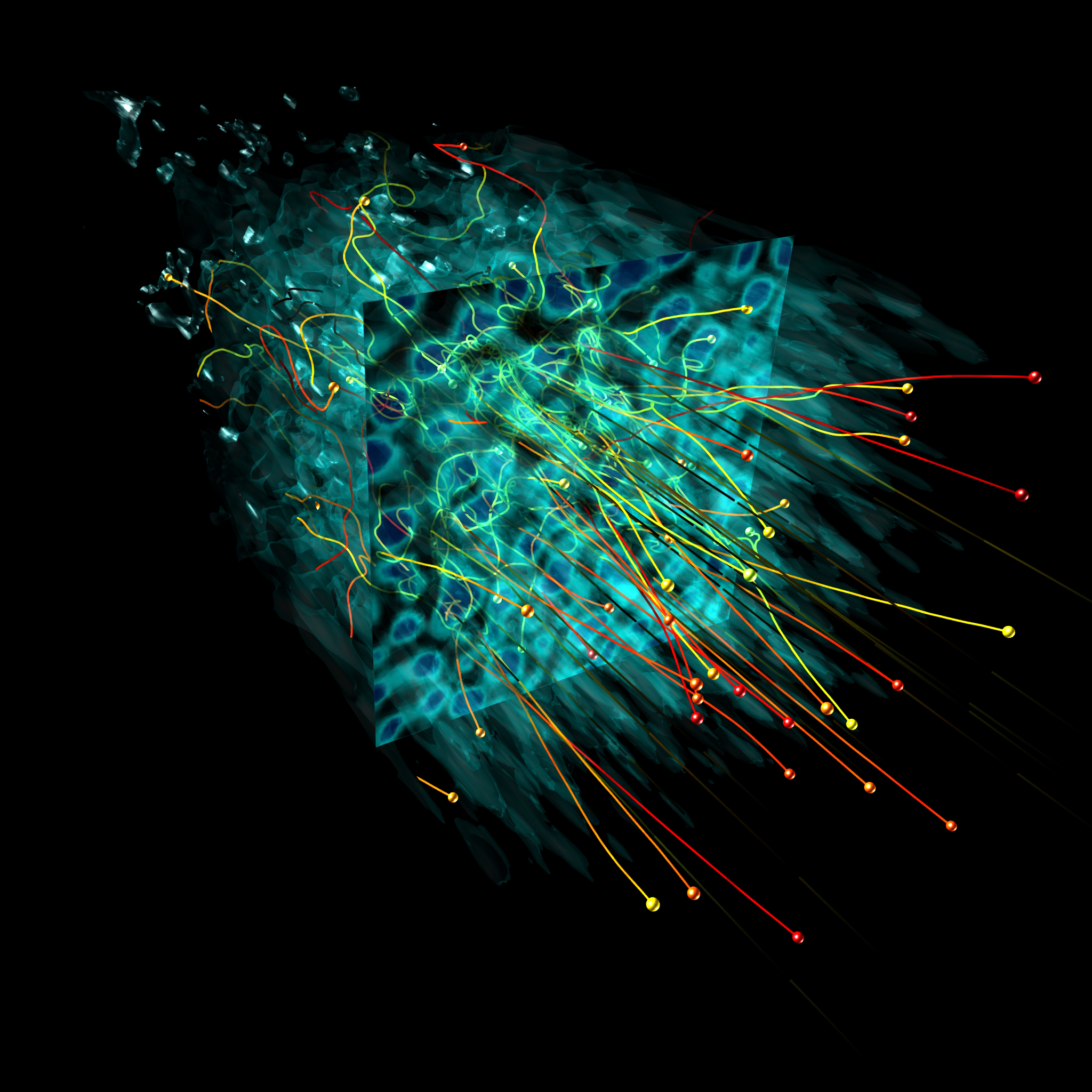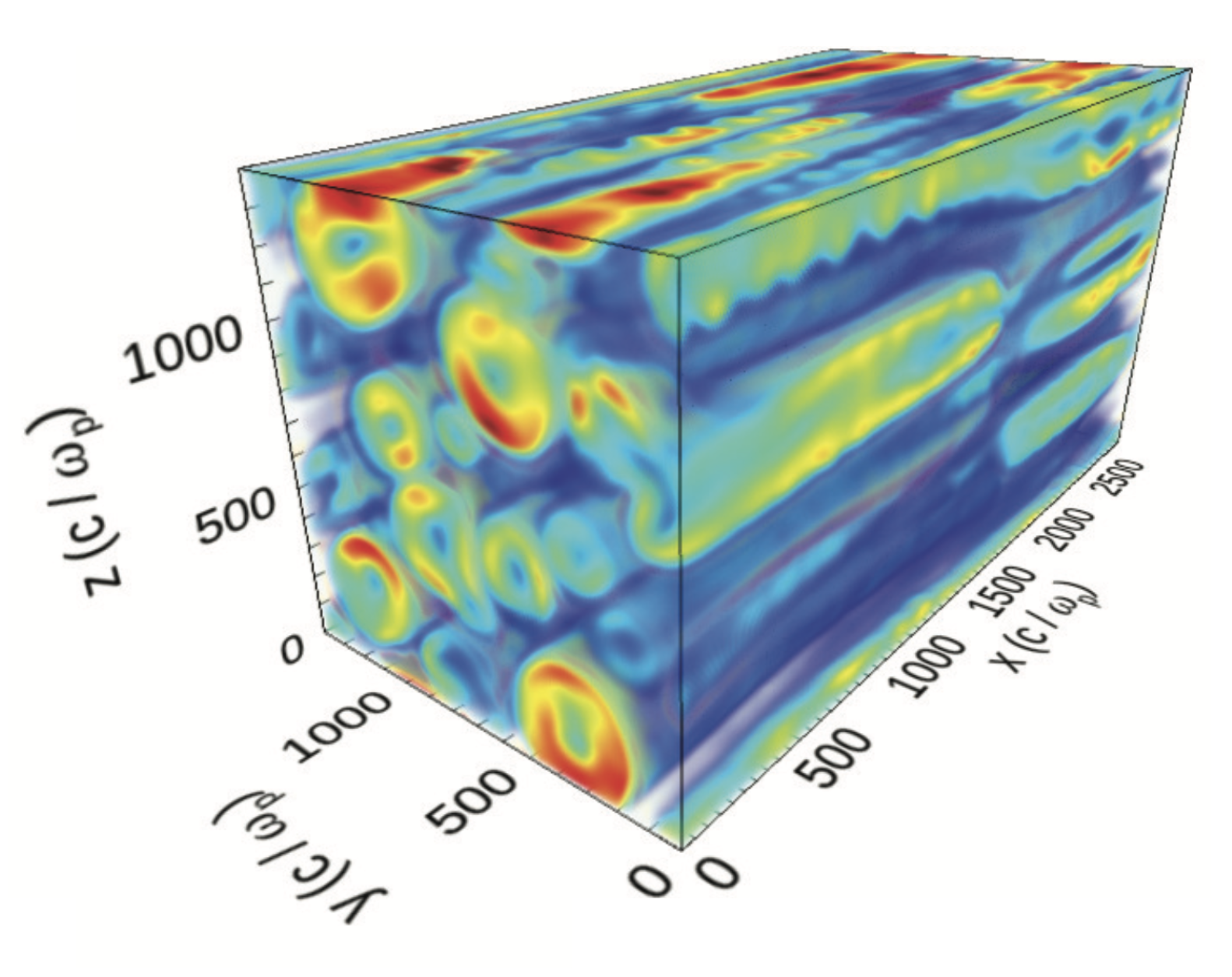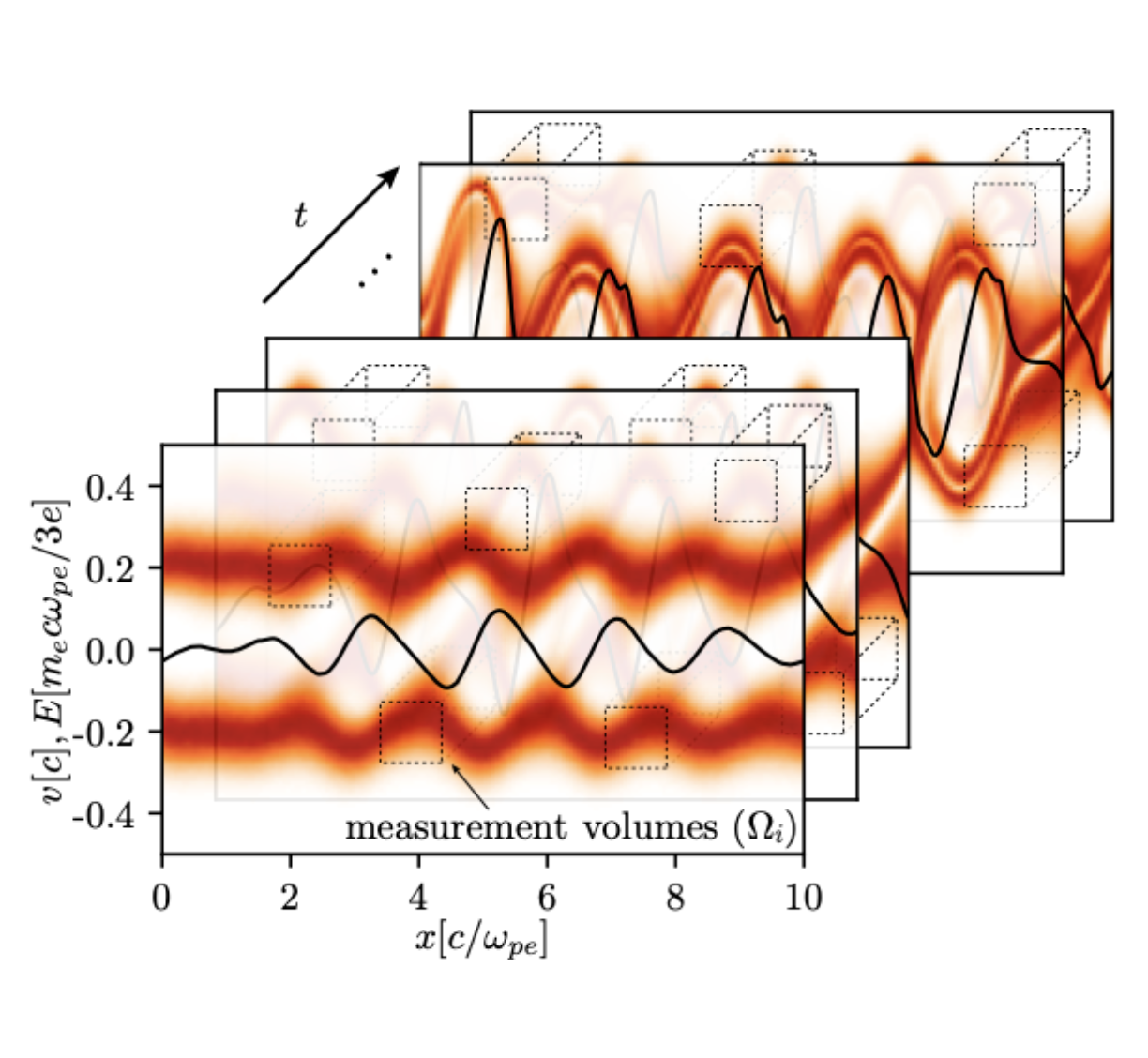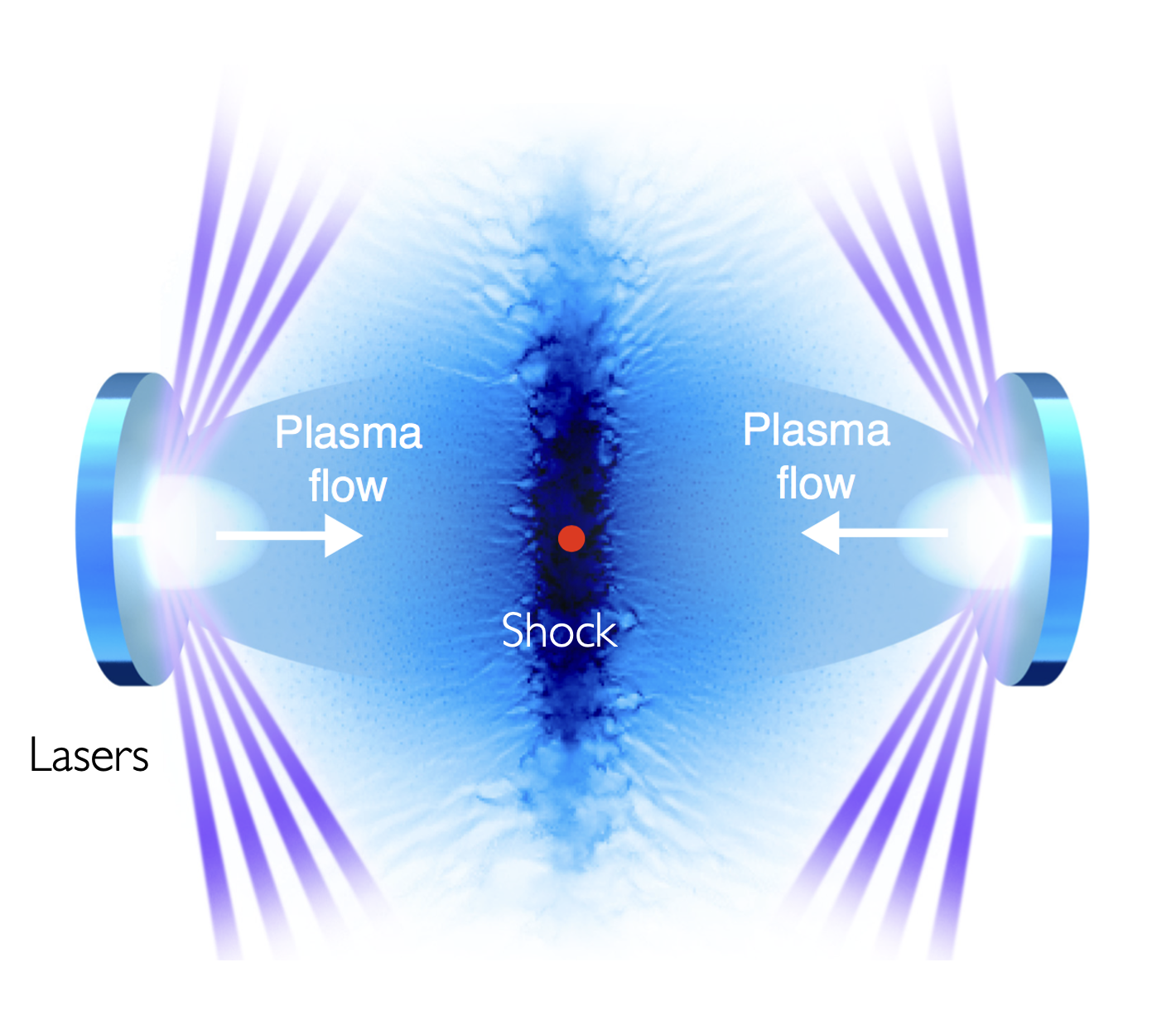Our Research
We are pursuing grand scientific challenges in plasma astrophysics along several key research areas.
Particle Acceleration and Cosmic Ray Origin

Cosmic plasmas are extraordinary particle accelerators reaching efficiencies and particle energies far beyond terrestrial accelerator facilities. Plasmas processes, such as collisionless shocks, magnetic reconnection and turbulence, are key to understanding the underlying acceleration physics.
- How do micro-instabilities control nonthermal particle injection?
- What are the dominant acceleration mechanisms?
- What sets the maximum particle energy?
Radiative and Relativistic Plasma Physics

Plasma behavior in relativistic and radiation-dominated regimes is critical to modeling black hole and neutron star magnetospheres, relativistic jets and gamma-ray bursts.
- How do radiative processes and pair production alter relativistic plasma dynamics and nonthermal particle acceleration?
- Can kinetic plasma models in strong fields explain observed high-energy emission spectra?
Plasma Instabilities and Transport Processes

Plasma micro-instabilities regulate magnetic field amplification, heat, momentum, and particle transport in weakly collisional and magnetized plasmas.
- What instabilities dominate in different astrophysical environments (Bell, mirror, firehose)?
- How do microphysical plasma processes affect large-scale cosmic-ray transport?
Multi-Scale Modeling and Machine Learning

Connecting microphysical kinetic processes to macroscopic MHD-scale phenomena is essential for predictive models of astrophysical systems.
- How do kinetic-scale processes feedback on global plasma dynamics?
- Can we use machine learning to accelerate the development of more efficient reduced/sub-grid plasma models?
- Can hybrid (MHD + kinetic) models capture the essential physics?
Laboratory Astrophysics

Reproducing astrophysical plasma conditions in the lab enables testing theories and benchmarking codes under controlled conditions. Recent advances in high-power lasers, particle accelerators and pulse-power facilities are opening unique windows into the microphysics of astrophysical plasma processes that can greatly complement astronomical observations and spacecraft measurements.
- Can we study basic plasma processes, such as shocks, magnetic reconnection, turbulence, and particle acceleration in relevant astrophysical conditions?
- Can we leverage the controlled study of these processes to develop novel and more efficient particle accelerators and radiation sources?